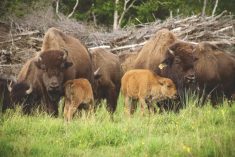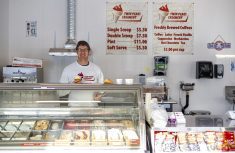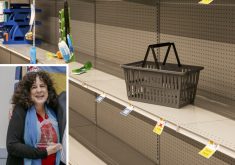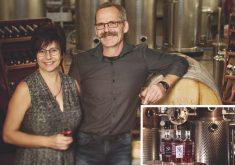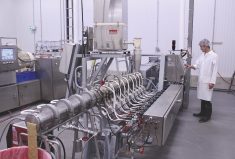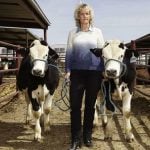Just making one of these moves would be a huge step for any farm, let alone both of them. First, the Haskett family switched their farm from hogs to goats. Then, years later, they pivoted their market strategy too, launching their own new brand.
In this article, we dive deep into how the family made those decisions. Admittedly, on your own farm, you may never imagine making such moves, but that isn’t really the question. Instead, is the process that the family used one that you could adapt on your own farm for evaluating and creating action plans?
“For me, it was a real journey,” says Greg Haskett, a father and third-generation farmer at Bright, Ont., an hour and a half west of Toronto, where the family has specialized in goat milk, raising 1,400 goats a year.
Read Also
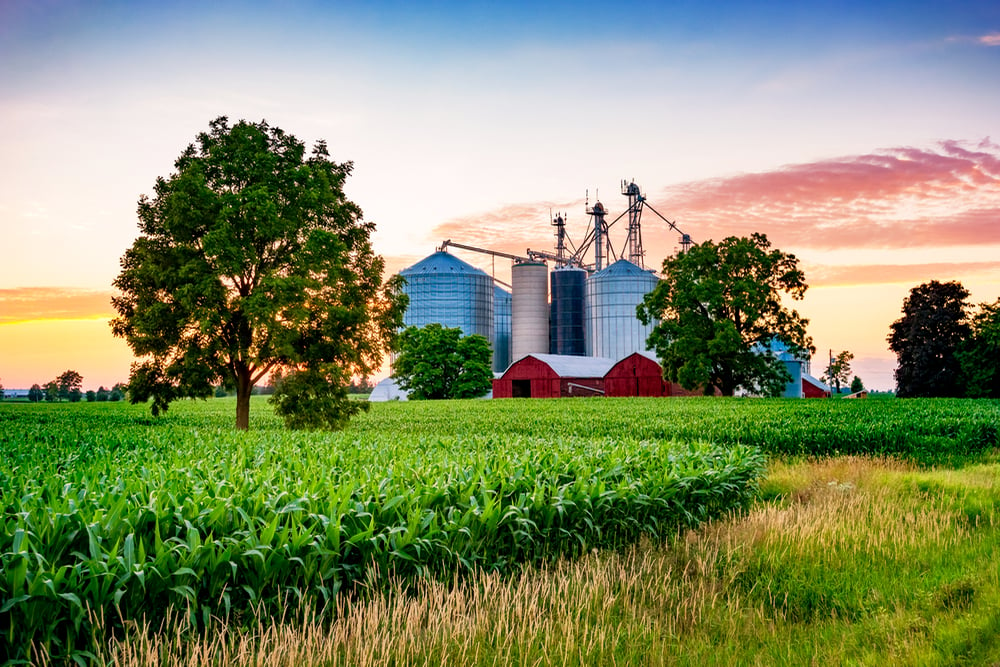
The wildly adaptable side of next gen agriculture
Some people just fall into the world of agriculture — and consider themselves lucky to have stumbled into such a…
Greg’s late father, Alvin, had bought a farm in 1967 where he raised beef and pigs, shifting solely to pigs and making them the primary source of his revenue.
The early 2000s were challenging in the pork sector, just at the time when Greg and his dad were talking about farm succession and Greg’s plans for the future.
“I was tired of the fluctuation in the market of the pig business,” Greg recalls. “We had tired facilities and Dad and I were tired.”
He and his father were stressed about money too. “We were losing the momentum of this dream we had been targeting,” Greg says. “Conversations between Dad and I became a reflection of the negativity and the frustration we were both feeling. It wasn’t healthy.”
A series of unfortunate events did not help, including a devastating barn fire and then Greg and his wife’s separation. The stress of financial worries and the future of the farm played a role in the breakdown of the marriage.
Something had to give. “I told my parents we had one year to figure out the business, or I was leaving,” Greg says. “And then, a few months later, Dad had his heart attack.”
It was a serious setback, taking Alvin out of commission for three months and leaving Greg on his own to manage operations. That spring, the government came out with a sow buy-out program and Greg told his parents he was selling his half of the herd.
PIVOT 1
A new farm strategy
“I told them I didn’t know what they were going to do, but that I was done. I’d had enough.”
Greg had taken an Advanced Agricultural Leadership course and it opened his eyes to different options and opportunities for diversification. “That’s what really led to a journey of self-discovery and the realization that I was living my dad’s dream, but not my own.”
By this point, Greg says it was clear they had lost their focus and their purpose. He considered switching careers altogether and becoming a professional firefighter. He even took a course in the States to pursue this but their insurance required the family to rebuild their facilities if they were going to get the claim they were pushing for. That helped Greg and Alvin find their way back to the farm and to one another. “He told me he couldn’t do it on his own and asked me what I wanted to do,” Greg recalls. “That’s when we started exploring new opportunities.”
They knew they didn’t want to go back to pigs. Instead, their strategy would be to remain flexible. So the Hasketts rebuilt two multi-purpose buildings — taking a year and a half before deciding on this. “I looked at our husbandry skill set and felt it could be applicable to another livestock and so I investigated a number of different avenues, things like rabbits, sheep and dairy goats,” Greg says.

His research led him to look at Ontario’s shifting demographics and especially at what immigration might mean for the province’s food needs. “Most of the world is used to having goat products as a dietary staple, and I felt this could mean increased demand.”
Greg and Alvin were both able to see the potential of the goat dairy industry. The business case looked solid too. “There was a low barrier to entry into this segment of agriculture and I felt I had transitional and analytical skills to make the best decision for us at the time, based on the research and due diligence I had done.”
Greg had researched more traditional options including pork, beef and poultry. “It was always the same size pie,” he says, “but being part of the goat industry seemed like it could have the potential to generate a bigger pie as there was growth and innovation potential.”
To diversify their farm, Greg and his father first tried their hands at both sheep (for meat) and goats (for dairy). Changes to farm infrastructure and facilities were not significant for this to happen. The barn rebuilds started in fall of 2009 and by March 2010, they received their first dairy cheque. During this time, Greg visited goat farms to learn about their operations and spoke to numerous goat dairy farmers, creating a new network while leveraging existing relationships for the introductions.
One finding, though, is that there were few transferable skills from pigs to dairy. They were going to have to be open to learning new systems of feeding, milking and cropping. “The execution of learning new systems is a huge undertaking,” he found. One thing he didn’t realize? It takes 10 goats to produce the same amount of milk from 1 cow. “All of this meant additional time and labour for us. Trimming 40 feet instead of four, it takes 10 feet of bunk space versus two — it is larger numbers of animals that produce less but require the same amount of care.”
He also had to learn about growing good-quality hay, which had a learning curve of its own, plus breeding and animal protocols. “I was able to notice different animal behaviour and signs, but caring for a baby pig versus a baby goat is completely different — feeding them is different and managing them is different.”
After two years with both sheep and goats, Greg shifted full-time to goat dairy, based on a surge in Ontario demand, but he also continued learning that what works on paper doesn’t always work in practice.
“If I could do it over, I would go and work on a goat farm first, which I didn’t do. I simply visited farms and talked to goat dairy farmers but that was not enough.”
That isn’t Greg’s only advice to other farmers thinking about pivoting, such as not having a huge debt load as a good first step.
“You also need to have staff for any level of scale, which means being a good leader and manager,” he says. It is also about having good relationships with your nutritionist, vet and banker to achieve your goals, especially when looking for financing. “And you need enough margin to survive the inevitable mistakes.”
“You need perseverance and the ability to find the right resources and mentors,” he adds. “You need to continually ask everyone you are talking to, ‘What am I not smart enough to ask you right now?’”
PIVOT 2
A new market
Cheryl, who had a career in sales and leadership facilitation, married Greg in 2014 and plunged into the life. Because of Greg’s first pivot, that meant goats. The farm was committed to goats. Its future was as a goat dairy.
Then, in 2017, came a big scare. One of the province’s two largest dairy milk buyers stopped buying Ontario product. They had found a cheaper source, and although this wasn’t the Haskett’s buyer, it had a significant impact on the entire industry, affecting everyone, some just not as badly as others.
Greg and Cheryl were still being paid while many others lost their operations completely. “It was gut-wrenching,” Greg says.
It also pushed the couple to do some serious thinking about their business model. Importantly, Cheryl and Greg started doing strategy work together. Cheryl used her facilitation skills to push Greg to answer questions about the farm’s future.
Aside from paying the bills and finding stability, Cheryl had another question: Did Greg know what he really wanted?
He had an answer. “I’ve always wanted to get closer to the customer and bring something all the way to the store,” Greg said. He wanted to develop a branded product. “I just have no idea how to do that.”
The two started brainstorming. The goat cheese market, they decided, was too competitive. So they focused on one of Greg’s values — making memories. “When you are crying, you pick up ice cream,” Cheryl said. “When you are laughing or having a celebration, you pick up ice cream.”
They also knew many people are lactose and casein sensitive and can’t digest cow’s milk, so they asked if goat milk ice cream could be the next big thing. They even dreamed of taking it one step further, creating their own “Ben and Jerry’s” plant with a factory and tasting rooms.
Maybe it could work. They developed a basic strategy plan, didn’t tell anyone (not even Greg’s parents) and silently went to work to determine if it would even be a feasible and marketable possibility.
Cheryl gathered (cow) ice cream recipe books, a cream separator and a little ice cream machine and began playing in the farm kitchen. Being a bit of a foodie, she went through a dual-credit Cooks Pre-apprenticeship program and turned to local farmers for ingredients to create non-traditional ice cream flavours using lavender, wine and beer.
The recipes were a hit with friends and family, and it was now time to make the dream a reality.
“We needed to figure out market feasibility, pricing and target markets,” Cheryl says. They also knew they couldn’t rely on family and friends to tell them the truth. She and Greg did an entrepreneur’s program at the University of Guelph focused on market analysis and market readiness, and understanding the viability of the product and whether people would buy it.
Cheryl also went to ice cream school at the University of Guelph and travelled to Chicago for a course in gelato making. “I had to understand the science behind making ice cream — it’s a very technical product. It’s sensitive to make, to store, and to move and distribute.”
Leaning on mentors she met through a program at Innovation Guelph, Cheryl began connecting with distributors and learning about pricing. One key learning was that it wouldn’t be feasible for them to open their own factory. Through their connections, though, they found a co-packer in the Greater Toronto Area to begin the production journey — a CFIA-certified plant that would allow them to ship across Canada, not just in Ontario.
“We gave them a very challenging product,” Cheryl says. “It wasn’t like normal ice cream; they were using lavender oil and local beers and wines, but we found a way to make it work.”
The Hasketts’ plan was coming together — recipes and production were in place; new hurdles were being tackled. Greg and Cheryl even settled on a name — Udderly Ridiculous — when they found themselves one day saying, “this is ridiculous.”
Bringing a product to market required strong sales skills which Cheryl already had, and she understood marketing to a degree, but not food packaging. They worked with a designer to create the label that reflected the voice of their product and their values and then incorporated both French and English. They secured bar codes and learned how to verify their ingredients, but once that was complete, there were new curves about ordering the packages and minimum quantity orders. “For a pint, you have to order a minimum of 10,000 units; for single-serve, 50,000; so then we had to get a shipping container to house all of our packagings. There was a lot of investment sitting there not generating any money with empty packaging waiting for sales to happen.”
In 2019, Udderly Ridiculous Goat Ice Cream was launched at select stores and events across Ontario, including the Royal Winter Fair, where it won three ribbons. Their marketing plan was based on sampling and education at events, which worked for most of 2019 until COVID-19 struck a few months later.

Events stopped. In-person sampling stopped. Canadians stopped browsing. For shoppers, the idea was to get what you need and then get back home as fast as possible.
“The events, alongside social media, had been our biggest marketing strategies,” Cheryl says. “So we knew we needed to get the brand voice out there in different ways through media attention.” The wins at the Royal helped generate buzz for the brand and so they entered their product in Grand Prix Canada. It ended up winning best dessert. “That really helped to build brand credibility and allowed us to talk to who we needed.”
While Greg continued to grow the farm dairy operations, Cheryl used her stakeholder relations skills to navigate relationships with distributors and cold storage facilities. “Once we were in Pusateri’s in Toronto, we were able to leverage that to get invites to have other conversations with other people.”
The Hasketts’ product is now across Canada (minus Quebec and the East coast) and is available in more than 300 stores.
Success has come from a sound approach, Greg and Cheryl believe. They have brought on mentors to fill in the gaps, and they never stop looking for ways to improve. “We are always looking for ways to do things differently … there are always pivots to be made and minor adjustments. And we do that every single day.”
“It’s a real process to bring the product to life,” Greg adds. “But if you can find someone you are aligned with and share the same values, it can be so dynamic.”
Cheryl agrees. Their skills need to complement, like her visionary skills with Greg’s executionary muscle, and they have also needed to know how to keep going forward, she says. “We laugh and say failure is not an option, so we just figure it out … It’s all ongoing; a constant roller coaster.”
Next, a pandemic pivot

The pivot to goats was a major feat for the Hasketts. So was getting their Udderly Ridiculous brand of goat ice cream on shelves across Canada.
Then came the pandemic and a whole new set of opportunities and challenges for Cheryl and Greg, especially since the pandemic made it so much more difficult to get in front of potential customers to get them to sample their ice cream.
The question was, should the Hasketts go for online sales of a product that melts?
They decided quickly. The costs would be too high. But that left them having to brainstorm other options to increase market awareness and ensure their product stayed on store shelves. Their biggest fear was getting kicked off of grocery shelves, knowing just how hard it is to get back on.
Meanwhile, Cheryl recalls, “People were asking if they could come to the farm and buy the ice cream and kept asking us if they could play with the goats or do goat yoga.” At first, Cheryl couldn’t see any potential there, and she admits it was tough to wrap her head around the goat yoga idea.
Then came other news. Greg’s father, Alvin, was diagnosed with pancreatic cancer. He became a motivation. “He was so social, loved agriculture and was a great advocate for our industry,” Greg says. “We wanted him to see this part of our journey come to life.”
In July 2021, the Hasketts opened their farm property and began “Udderly Ridiculous Farm Life,” allowing visitors to come and select from eight immersive farm experiences including farm tours, alpaca walks, alpaca picnics, goat recess and, of course, goat yoga. “I don’t teach that class — we have a certified yoga instructor come in,” Cheryl laughs.
“We made another pivot — the pandemic forced us to adjust,” she says. Agri-tourism allowed the Hasketts to create additional revenue to keep Udderly Ridiculous on grocery shelves given the low margins in the industry.
Greg hopes the legacy of the family business lasts as he and Cheryl continue to have their strategic planning sessions about how the farm will evolve.
“This was no overnight success,” he says. “It took us 15 years to get here.”
The farm experiences, however, do offer another type of success and satisfaction. “The joy on our guests faces, and the reviews and gratitude for the experience they have here at the farm keep us going when things are hard and we are exhausted,” he says. “We are continuing to help make memories; that is incredibly rewarding.”
– This article was originally published in the May/June 2022 issue of Country Guide.




